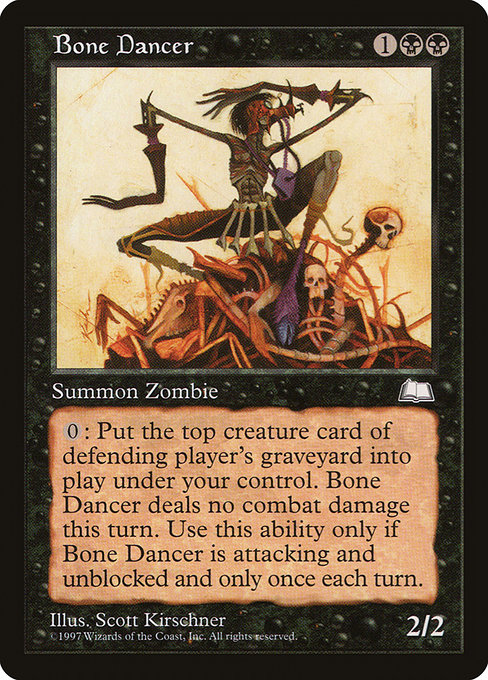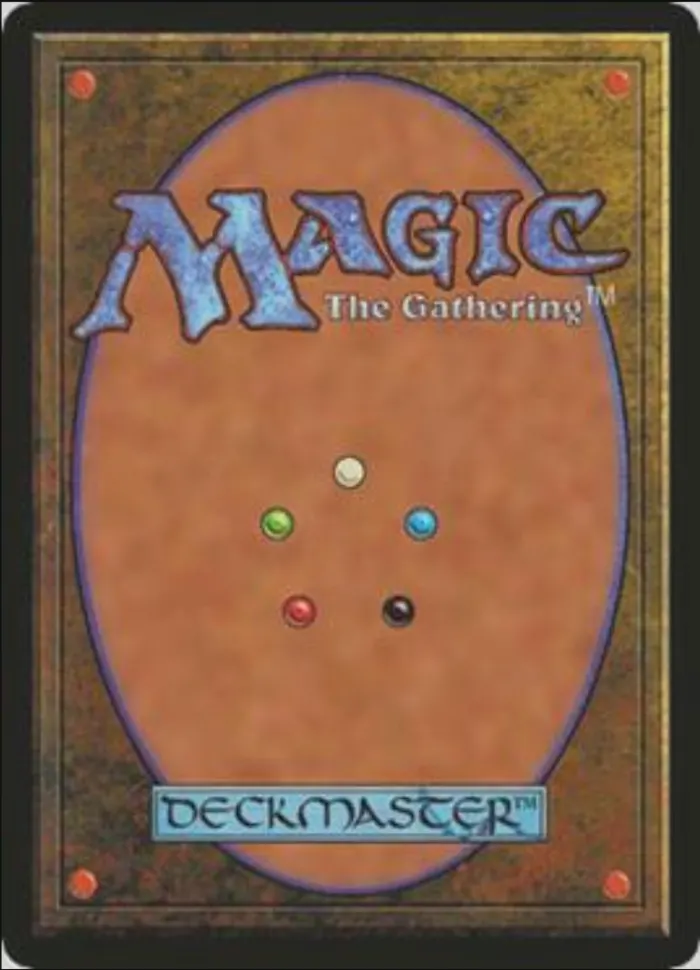standard
future
historic
gladiator
pioneer
modern
legacy
pauper
vintage
penny
commander
brawl
alchemy
paupercommander
duel
oldschool
premodern
Rulings
Say you’re the owner of both a permanent and an Aura that’s attached to it. If both the permanent and the Aura are destroyed at the same time (by Akroma’s Vengeance, for example), you decide the order they’re put into your graveyard. If just the enchanted permanent is destroyed, it’s put into your graveyard first. Then, after state-based actions are checked, the Aura (which is no longer attached to anything) is put into your graveyard on top of it.
The “top” card of your graveyard is the card that was put there most recently.
Players may not rearrange the cards in their graveyards. This is a little-known rule because new cards that care about graveyard order haven’t been printed in years.
The last thing that happens to a resolving instant or sorcery spell is that it’s put into its owner’s graveyard. —Example: You cast Wrath of God. All creatures on the battlefield are destroyed. You arrange all the cards put into your graveyard this way in any order you want. The other players in the game do the same to the cards that are put into their graveyards. Then you put Wrath of God into your graveyard, on top of the other cards.
If an effect or rule puts two or more cards into the same graveyard at the same time, the owner of those cards may arrange them in any order.
An ability that triggers when something “attacks and isn’t blocked” triggers in the declare blockers step after blockers are declared if (1) that creature is attacking and (2) no creatures are declared to block it. It will trigger even if that creature was put onto the battlefield attacking rather than having been declared as an attacker in the declare attackers step.
The “top” card of your graveyard is the card that was put there most recently.
Players may not rearrange the cards in their graveyards. This is a little-known rule because new cards that care about graveyard order haven’t been printed in years.
The last thing that happens to a resolving instant or sorcery spell is that it’s put into its owner’s graveyard. —Example: You cast Wrath of God. All creatures on the battlefield are destroyed. You arrange all the cards put into your graveyard this way in any order you want. The other players in the game do the same to the cards that are put into their graveyards. Then you put Wrath of God into your graveyard, on top of the other cards.
If an effect or rule puts two or more cards into the same graveyard at the same time, the owner of those cards may arrange them in any order.
An ability that triggers when something “attacks and isn’t blocked” triggers in the declare blockers step after blockers are declared if (1) that creature is attacking and (2) no creatures are declared to block it. It will trigger even if that creature was put onto the battlefield attacking rather than having been declared as an attacker in the declare attackers step.
Rulings
Say you’re the owner of both a permanent and an Aura that’s attached to it. If both the permanent and the Aura are destroyed at the same time (by Akroma’s Vengeance, for example), you decide the order they’re put into your graveyard. If just the enchanted permanent is destroyed, it’s put into your graveyard first. Then, after state-based actions are checked, the Aura (which is no longer attached to anything) is put into your graveyard on top of it.
The “top” card of your graveyard is the card that was put there most recently.
Players may not rearrange the cards in their graveyards. This is a little-known rule because new cards that care about graveyard order haven’t been printed in years.
The last thing that happens to a resolving instant or sorcery spell is that it’s put into its owner’s graveyard. —Example: You cast Wrath of God. All creatures on the battlefield are destroyed. You arrange all the cards put into your graveyard this way in any order you want. The other players in the game do the same to the cards that are put into their graveyards. Then you put Wrath of God into your graveyard, on top of the other cards.
If an effect or rule puts two or more cards into the same graveyard at the same time, the owner of those cards may arrange them in any order.
An ability that triggers when something “attacks and isn’t blocked” triggers in the declare blockers step after blockers are declared if (1) that creature is attacking and (2) no creatures are declared to block it. It will trigger even if that creature was put onto the battlefield attacking rather than having been declared as an attacker in the declare attackers step.
The “top” card of your graveyard is the card that was put there most recently.
Players may not rearrange the cards in their graveyards. This is a little-known rule because new cards that care about graveyard order haven’t been printed in years.
The last thing that happens to a resolving instant or sorcery spell is that it’s put into its owner’s graveyard. —Example: You cast Wrath of God. All creatures on the battlefield are destroyed. You arrange all the cards put into your graveyard this way in any order you want. The other players in the game do the same to the cards that are put into their graveyards. Then you put Wrath of God into your graveyard, on top of the other cards.
If an effect or rule puts two or more cards into the same graveyard at the same time, the owner of those cards may arrange them in any order.
An ability that triggers when something “attacks and isn’t blocked” triggers in the declare blockers step after blockers are declared if (1) that creature is attacking and (2) no creatures are declared to block it. It will trigger even if that creature was put onto the battlefield attacking rather than having been declared as an attacker in the declare attackers step.
Votre collection ? vos decks ?
Envie de gérer votre collection et/ou créer des decks ?

